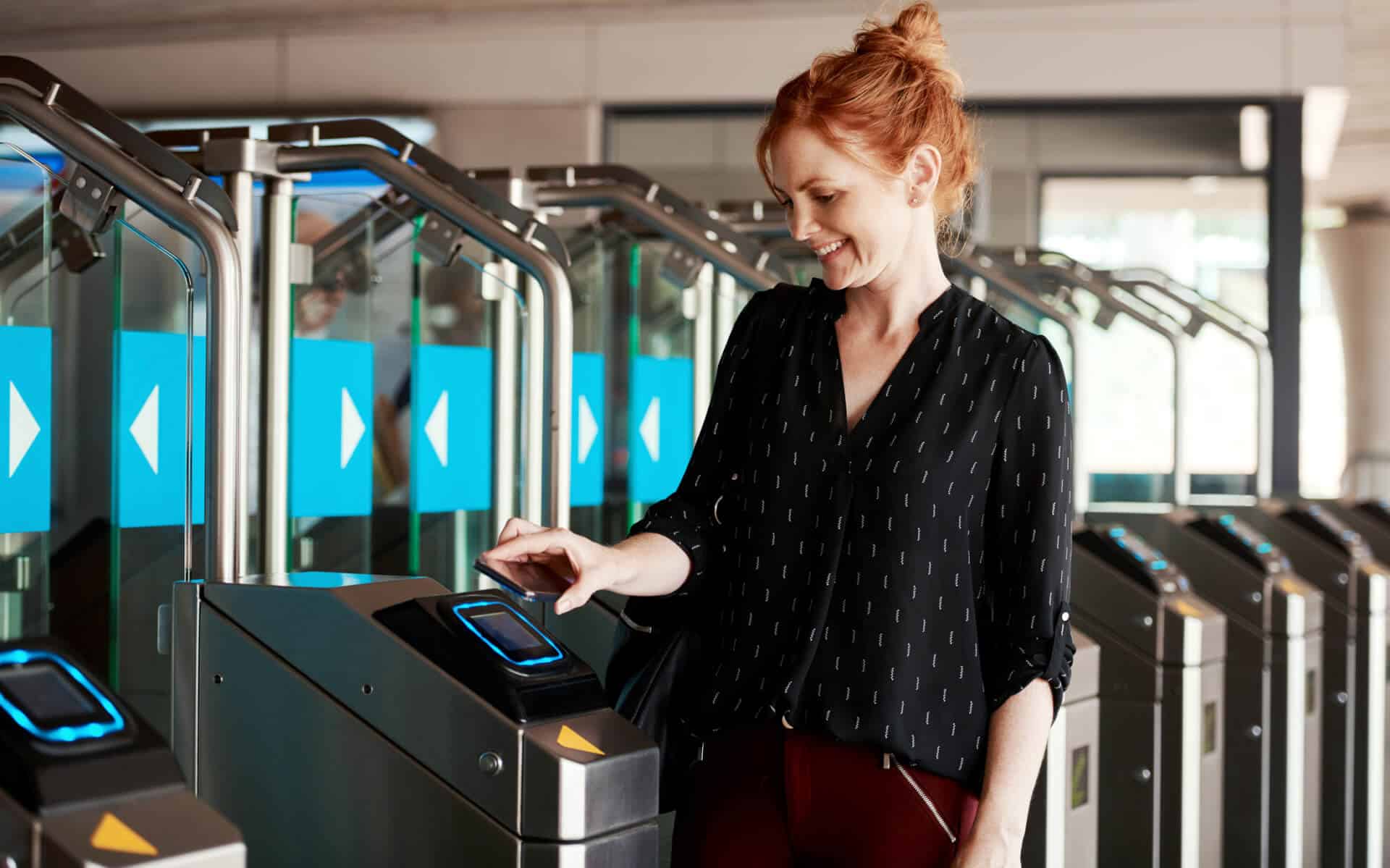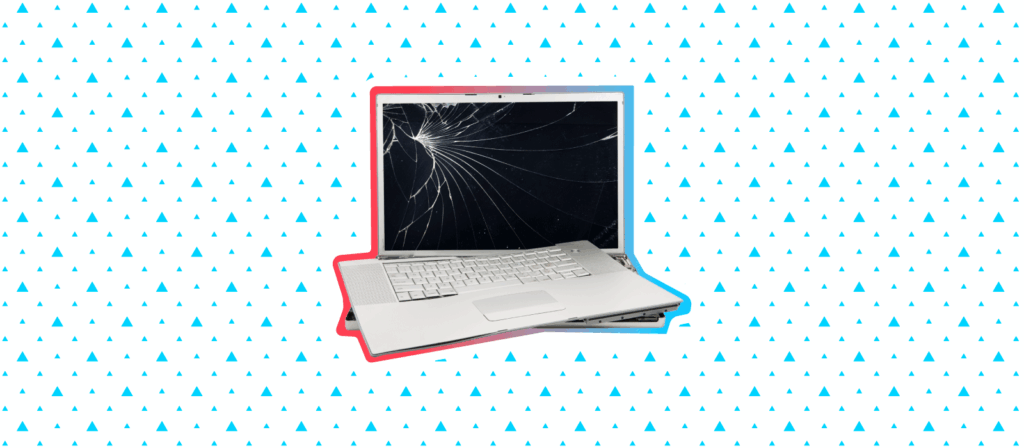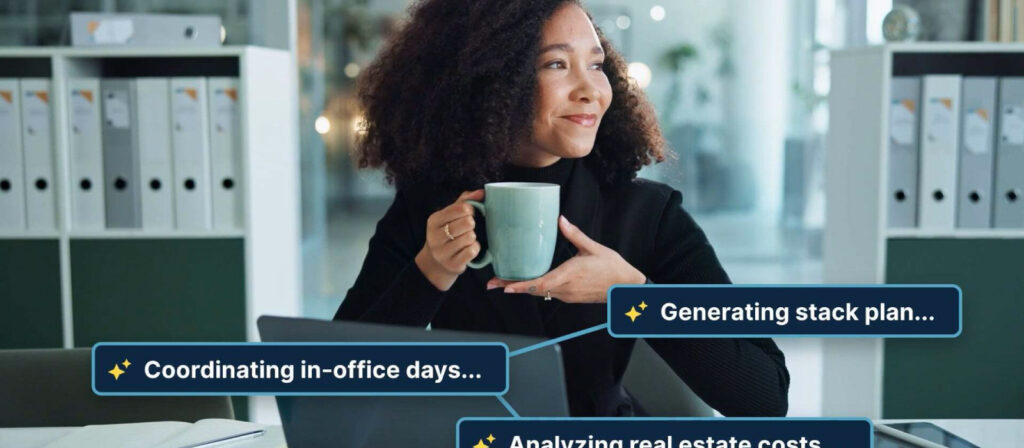Embracing the right workplace trends is always top of mind for companies that want to stay competitive in today’s increasingly complex market.
The workplace is always changing—with or without global pandemics to contend with. The reality is that the shift towards more hybrid and flexible working was picking up speed long before anyone had heard of Covid.
Thanks to these challenges and a tight labor market, many companies are now scrambling to adopt emerging work trends. But given the growing intricacies of today’s workplace, business leaders need a smart approach. Especially if they want to realize any potential benefits from changes.
In this article, we explore 12 emerging workplace trends and initiatives that smart companies are exploring and implementing today. When carried out properly, these trends will not only help you keep up with the competition. They can also provide a host of other benefits ranging from improved employee wellbeing to more innovation in the workplace. This makes them key to future-proofing any organization.
12 Critical workplace trends
Taking advantage of new trends and work models is what points a company in the right direction to stay productive in the face of uncertainty.
The hybrid workplace and other complex work environment types are no longer the ‘future of work.’ They’re here to stay! This is in large part due to demands from all generations in the workplace. This makes these environments a present reality for many companies.
When implemented well, these trends can lead to more employee engagement and improved retention, among other benefits. But when implemented poorly, they can get unwieldy fast, introducing more problems than they solve.
Meanwhile, the labor market has never been tighter. Gartner HR researchers Brian Kropp and Emily Rose McRae even suggest that hybrid work and sustained attrition will shift the Great Resignation into what they call the ‘sustained resignation.’
In other words, it’s never been more important to embrace workplace trends that keep employees happy and productive, while also supporting long term business goals and helping maximize the bottom line.
Specifically, many companies are now exploring and adopting the following 12 workplace trends:
- True flexibility
- Tailor-made workspace design
- Better meetings
- Technology that actually improves the office
- Data-driven workspace planning
- Improved workplace communications
- Smarter security
- Blended departments
- More health and wellness
- More diversity and inclusion
- A new role for facility managers (FMs)
- Enhanced employee experience
Of course, knowledge is power. Understanding these trends is the first step to implementing them properly. Here’s what you need to know.

1. Workers want true flexibility
While ‘hybrid work’ is the buzzword du jour (and certainly becoming a ‘new normal’ and a workplace trend for many workplaces), what employees are often seeking when talking about ‘hybrid’ is actually more flexibility.
We know from research that up to 50% of workers say they’d quit (or not accept a job offer) from a company with too few flexible work options. We also know that work flexibility is important for well-being. And we know too that overall workplace experience scores jump from 45% to 74% when workers have more choice and freedom over when, where, and how they work.
Given these numbers, it’s not surprising that companies are turning to dynamic work environments. This can include things like agile working, office neighborhoods, and ABW: activity-based working. All of which give workers more decision-making power over their work.
Along with these new ways of working, companies are also experimenting with different hybrid work models (i.e.: traditionalist, architect, nomad, and pioneer). These determine which best suits both their employees and their own unique business goals.
Flexibility around how, where, and when people work is no longer a differentiator, it’s now table stakes.
Brian Kropp and Emily Rose McRae, Harvard Business Review
When any of these strategies are implemented correctly, they can increase productivity, prevent burnout, and help everyone actually realize the benefits of working remotely. Given the employee demand, they’re also a useful tool in both keeping and attracting top talent. Embracing this new future of remote working also opens the talent pool to job seekers on a national or even international scale.
2. There’s no longer a ‘one-size-fits-all’ in workspace design
The days of endless cubicles are out. But so too are large, open offices that don’t serve the people who use them. The biggest trend in workspace design today is creating offices that are designed around how they’ll actually be used. Companies must focus on what employees actually need to be most productive.
In other words, sometimes employees need private spaces. Sometimes they need ‘official’ collaborative spaces, and sometimes they need places for impromptu brainstorming or to take breaks when needed. That’s why it’s up to FMs and other leaders to figure out how best to design an office space that is fit for purpose and in line with whatever flexible workplace strategy they’re using.
Ideally, companies will solicit (and actually consider) employee feedback in their design plans. Of course, along with actual data on how the office is used, which we’ll explore further below.
Ultimately, the new goal in workspace design is to create a physical space that actually works, first and foremost, while also reflecting and enhancing company culture. This can be as simple as coming up with on-brand room names (which is why the Food Network has meeting rooms named after fruit, while Nike sticks to popular athletes). Or as complex as adopting fun new flex room ideas (like building a games room for when workers need to blow off steam).
Organizations are clearly undergoing a change in their relationship with the idea of a centralized workplace.
Bernard Marr, Forbes
Note, too, that even in the most traditional offices, a good deal of work takes place online. Therefore, companies now also need to follow the workplace trend of creating a digital workspace that complements and supports the physical office.
3. Meetings have to be more productive
There’s a reason that endless and pointless meetings have become a meme; namely, too many employees spend too much time in endless and pointless meetings.
In fact, nearly half of the respondents in one recent survey reported that 40% or more time spent in video conference calls was unproductive and wasteful. Moreover, unproductive meetings cost businesses an estimated $37 billion a year! Perhaps this is not surprising, given the 17 million business meetings held each day in the U.S. alone.
Of course, good meetings are critical for brainstorming, team building, engagement, and collaboration. But employers are waking up to two facts:
- Not all meetings are necessary.
- When meetings are necessary, participants need the right tools, technology, and meeting room design to keep them productive.
Specifically, to combat these issues, many companies are coming up with better guidelines and policies for their meetings. Just as importantly, they’re creating better rooms and using meeting room booking software to make navigating them much easier. Since employees can otherwise spend up to 30 minutes a day just looking for meeting spaces, this is usually a welcome change.
And given the rise in hybrid work, companies also need to improve hybrid meetings. These can be often confused and chaotic at best. This usually means moving beyond a static space with a table, a few chairs and a whiteboard. And instead incorporating a variety of new conference room ideas.
For example, Zoom rooms, Zoom meeting calendar integration, and digital meeting room signage are all workplace trends that can make rooms easier to book and use, preventing dreaded ghost rooms or unproductive meetings.

4. The right technology makes the workplace easier to navigate
For all its benefits, when flexible working isn’t managed properly, it can introduce just as many problems as it solves. If you’re using a flexible seating strategy like hot desking or free addressing, for example, how will workers know where to sit? The answer to that question is often what makes or breaks any new strategy.
By now, most companies have figured out the workplace technology they need to enhance their daily operations. What many are still lacking, however, is technology that helps workers navigate their physical environment. This is critical, since wandering around trying to find a desk each morning is as demoralizing as it is unproductive.
Thankfully, cloud-based workplace management software makes both desk booking and room booking simple and effective. Especially when coupled with IoT sensors and a Visual Directory, as well as when it’s accessible via mobile app, it can give employees much more visibility into their workplace. In other words, they’ll be able to ‘see’ where all the people and assets they need are, even when they’re not sharing a physical space (critically important for supporting a hybrid workforce).
Similarly, many companies are now looking to digital wayfinding solutions that can help both workers and visitors get where they’re going more easily.
5. Workplace planning should be data-driven
One of the benefits of the trend towards workplace management software is how it can help inform better workplace planning.
Companies today no longer have to guess at what might suit their workforce. Instead, they can use data pulled from their workplace software to get an accurate, up-to-date picture of how the office is actually being used. Armed with this data, they can make more effective decisions around the office. For example, headcount planning and better space optimization.
Since this data can be used to improve space utilization in particular, it can also lead to a smaller real estate portfolio. This benefits any company looking to reduce their budget, their carbon footprint, or both.
6. Workplace communications can be much better
It’s been decades since email was the most advanced way to reach someone at work. But only recently have we seen communication tools that can rival the water cooler. Thankfully, many companies are now embracing the trend towards digital workspace solutions that improve both synchronous and asynchronous communication and collaboration.
For example, Microsoft Teams, Slack, Zoom, Google, Asana, and Loom all offer solutions that enhance workplace communication. Smart companies will work with their IT department to create custom solutions that work for their teams (and ideally integrate with their workplace management software).
7. More complex workplaces demand smarter security
As workplaces become more complex, so does workplace security. Remote employees in particular introduce new concerns surrounding cybersecurity, and information and asset security.
Meanwhile, security in building automation systems is becoming crucial, as more bad actors are targeting even small- and medium-sized businesses. And despite their many benefits, smart buildings: IoT can also introduce new vulnerabilities to hackers as well.
The result is a trend toward smarter security that uses new technology in the workplace to its advantage. For example, many companies are now using a badge system to gain more nuanced control over access to buildings, rooms, desks, or even sensitive areas. Basically, every employee and visitor will have a badge that will automatically grant or deny them access to where they should or shouldn’t be.
Not only can a badge system help improve security. It can also provide real-time data about how people are interacting with their space. Which in turn, can help lead to better decision making down the road.
8. Departments that can be blended, should
Ever since Steve Jobs introduced his famous ‘no silo’ rule, it’s been impossible to ignore the benefits that arise from unplanned, face-to-face collaboration. Even between people with widely different roles.
Today’s workplace is often fluid, and as such, many departments share overlapping responsibilities. Specifically, while FM, IT, and Human Resources all have their own unique skill sets and duties, they also all share one overarching concern: improving employee experience and creating a better work space.
Since collaboration in the workplace between these three departments is so critical, many companies are now blending them, or at least encouraging them to work in tandem to create safer and more efficient offices.

9. We need more focus on health and wellness.
Promoting health and wellness is quickly becoming a given in today’s business environment. Of course, this is the ‘right’ thing to do. It’s also the smart thing to do, given that, according to McKinsey, US companies spend almost $200 billion a year on healthcare costs. Meanwhile, companies with highly effective wellness programs can significantly lower their voluntary attrition, with healthy employees also being more productive and performing better.
That’s why we can expect to see increasing focus on work-life balance. This is along with wellness programs (think in-office yoga sessions) and ‘perks’ like stipends towards things like gym memberships or outdoor activity gear. Some companies, like Yahoo and Asana, give their employees healthy meals and snacks when they’re on the job.
We can expect to see an increase in mental health services, critical since 76% of workers today mental health benefits are important when evaluating new jobs. This can look like mental health services, for example, or offering mental health days in addition to sick days.
Companies should bear in mind, as pandemic restrictions lift and we return to the office, people have a heightened awareness of their personal space and security. In other words, we can expect some amount of social distancing to be required for the foreseeable future. Especially while employees continue to demand extra health protections from their employers.
The pandemic has shown us just how important it is to support not only physical health but also mental health. Plus, employers are tuning into the fact that healthy and happy employees are more effective, engaged and satisfied in their jobs.
Nicole Dunn, Forbes
To make this easier, many companies are turning to tools like Distancing Planner and Safeguard. Regardless, they’ll need to continually demonstrate to their people that putting their health and safety first.

10. We also need more diversity and inclusion
Similarly, many companies are now waking up to the importance of diversity, inclusion, and fairness. In fact, an analysis of S&P earnings calls found CEOs talking about issues of equity, fairness, and inclusion an incredible 658% more in 2022 than in 2018. This is more than just a workplace trend. It’s essential!
According to a CNBC/SurveyMonkey Workforce Survey, 80% of workers say they want their company to value diversity, equity, and inclusion. Younger generations in the workplace in particular want to work for companies that reflect their principles.
This means creating a more diverse workforce, of course. But also creating an inclusive company culture that creates more equity across all groups.
For example, even though we now know that hybrid and remote workers are just as productive as their in-office counterparts, managers tend to appreciate—and promote—in-office workers more. Not only is this unfair, it’s also particularly troubling since women with young children want to work from home 50% more than men with young children. Companies need to address this and similar issues if they want to create better workplaces for everyone.
While the social implications for valuing diversity and inclusion resonate with workers, the business case is equally strong.
Susan Caminiti, CNBC
Going forward, we can therefore expect to see more efforts to address wage gaps and create true fairness in the workplace. This is critical, since, according to Gartner research, employees in high fairness environments perform 26% better and are 27% less likely to quit.
11. FMs are stepping into important leadership roles in the workplace
Along with the growing complexity of the workplace, the roles and responsibilities of a facility manager are also now growing in complexity, too. FMs have always been important in the workplace, but thanks to the challenges presented by hybrid work and distributed workforces, they’re quickly becoming indispensable.
Specifically, beyond simply managing daily operations for their companies, more and more FMs now find themselves in change management roles, helping to maximize complicated systems and strategies. They’re also often responsible for improving space management, as well as handling move management, request management, and asset tracking
And of course, that’s all while working hand-in-hand with IT to keep networks secure. And working hand-in-hand with HR to help onboard new employees and create the right messaging around new policies.
In short, FMs are becoming important leaders in the workplace, helping everyone navigate all these other workplace trends we’re experiencing.
12. Employee experience matters more than ever
Last but definitely not least, all of these modern workplace trends point to one underlying theme: improving employee experience.
The reality is that even with the smartest building and the most advanced AI, people are still at the heart of business success. Prioritizing employee experience, engagement, and well being is therefore the best way forward for companies that want to stay competitive.
There are many ways to enhance employee experience. It can start with robust employee benefits, like health benefits and retirement planning and assistance. Company culture matters, as does work-life balance. And like we’ve already covered, we know that higher levels of autonomy and flexibility also lead to happier employees.
Going forward, we can expect to see companies embracing all these trends (and developing new ones), all in an effort to keep their employees happy, healthy, and excited to start work each morning.

Workplace trends: What is the future of work?
The future of work will be increasingly employee-centric, as workplaces adopt a variety of new and exciting trends to attract and retain great people. We can expect to see ‘fit for purpose’ workplaces that are designed with employee experience and security at the forefront.
OfficeSpace makes it easy to embrace all the latest workplace trends. Reach out for a free demo.
Photos: PeopleImages, Pekic, g-stockstudio, Vasil Dimitrov, EmirMemedovski, Geber86





